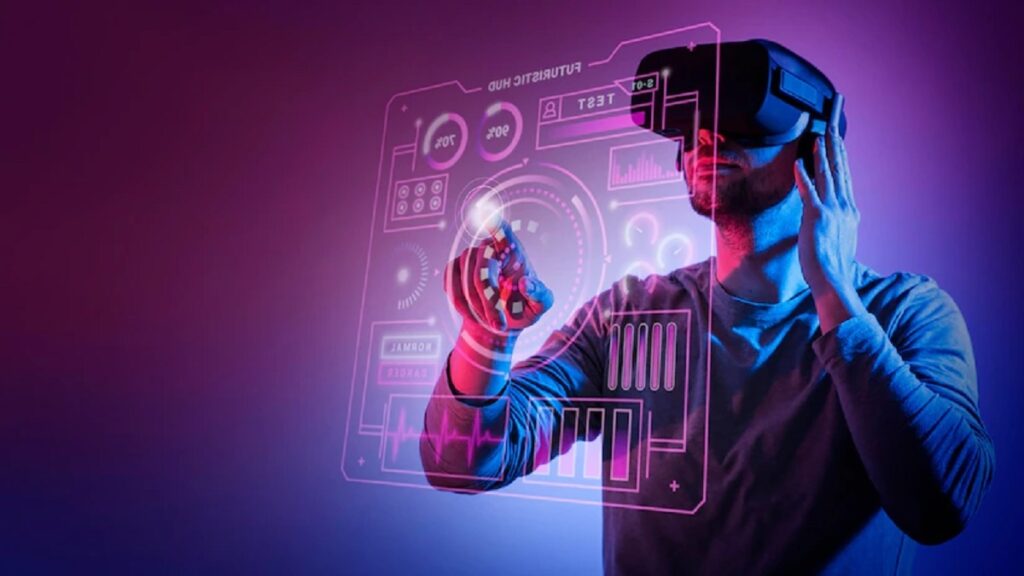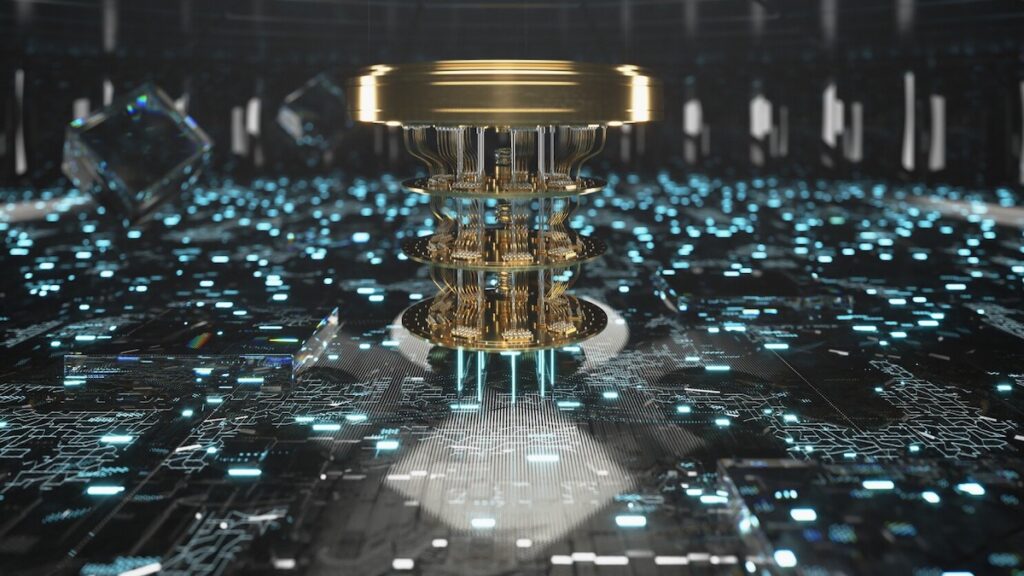As technology rapidly evolves, its implications continue to go mostly unexplored by many. Terms such as AI, IoT and VR have become widely-discussed concepts yet their deeper significance often goes uncovered only over time. Emerging technologies elude a universal definition, yet can generally be understood as recent technological innovations that promise to revolutionise both society and the economy. From AI powering our smartphone interactions to VR’s potential in education, these technologies have already become part of daily life. Their promise transcends convenience alone, suggesting an optimistic future filled with improved healthcare, environmental solutions, and an innovative entrepreneurial ecosystem. However, realizing its full potential requires collective action; everyone from everyday citizens to policymakers needs to grasp how these innovations work so as to take full advantage of them and realize its full potential. In this article, we delve into their current impact while looking forward to what brighter horizons await.
Artificial Intelligence(AI)
AI is like teaching machines to think and act like humans. Right now, we’re trying to make a machine that can think and understand just like us. But until we get there, we have simpler AI systems that do specific jobs. For example, these AI systems help in sorting out unwanted emails, guiding us on maps, and helping voice assistants like Siri work. As time goes on, these AI systems will be able to do even more cool stuff.
A scientist named Max Tegmark said that machines are slowly getting smarter in different areas. Thanks to AI, we might soon have talking robots, self-driving cars, virtual nurses, custom-made study materials, and even machines that can create art!
5G and the Internet of Things (IoT)
You might think, “We already have 4G, so why do we need 5G?” But 5G will be way faster than 4G. It will let more gadgets connect to the internet without any delay and work even when the signal is weak.
5G will help the “Internet of Things” or IoT. This means that not just computers, but many other things like cars, street lights, and even farms will be connected to the internet. Imagine a city where everything is smart and connected, or farms where robots do all the work. That’s what IoT can do!
For companies, 5G will make working from different places easier. Sharing live videos or computer screens will be super smooth. And with IoT, things will become more efficient. For example, instead of a person collecting data from a factory, the factory itself can gather and send the information.
Serverless Computing
The name “serverless computing” is a bit tricky. It doesn’t mean there are no servers involved. Instead, it’s a way to use computer resources more smartly. When an app or program isn’t being used, it doesn’t use any resources. But when it’s needed, it automatically gets the power it requires.
What’s cool about this is that companies don’t have to stress about setting up big computer systems or worrying about how much internet speed they need. They only pay for what they use. Imagine it like a water tap: you only pay for the water when you turn it on and use it. Eric Knorr, a tech expert, says that this way, companies only get charged when their app or service is running. If it’s not running, they don’t pay anything.
Biometrics
Biometrics is a way for machines to recognize us using things like our face, voice, or fingerprint. Many of us already use this on our phones or computers to unlock them. As this technology gets better, we might not need to remember passwords anymore.
Right now, many people have weak passwords or use the same password everywhere. This makes it easy for bad guys to get into their accounts. Even if you’re good at making strong passwords, it can be hard to remember them all.
That’s why biometrics is great. It’s tough for someone to fake your fingerprint or face. And if a system uses more than one way to recognize you, like both your face and voice, it’s even safer.
VR and AR

Virtual Reality (VR) and Augmented Reality (AR) As computers get more powerful and cheaper, big companies like Google and Facebook are getting interested in virtual reality (VR). More people are using augmented reality (AR) apps on their phones, which might make VR and AR more popular.
Microsoft introduced something called Mesh, and other companies have similar things. They let people work together in a virtual space, like having a meeting or doing a project.
Peter Diamandis, the head of XPRIZE Foundation, thinks this tech can change how we shop. For example, you could try on clothes on a virtual model of yourself or see how a seat looks in a theater before buying a ticket.
Blockchain
Even though Bitcoin, a type of digital money, is talked about a lot, it’s the technology behind it called blockchain that’s getting more attention.
Instead of keeping records in one place, blockchain spreads them out. This means it’s hard to lose or change the records.
Elad Gil, a tech expert, said that with blockchain, it’s hard for bad governments to take your stuff, and it’s hard for hackers to get to your data. But, he also said that it’s not impossible to hack blockchain.
Many groups are interested in blockchain because it can keep records safe. For example, hospitals could use it for patient records, it could be used for safe online voting, or to track items being shipped around the world. It can also help with online safety.
Robotics
The first factory robot started working in 1962. Since then, robots have been used more and more in different jobs. Soon, we might see robots doing simple jobs like cleaning and delivering things on our streets.
Some people have been worried about robots taking over their jobs for a long time. But leaders need to tell their teams that robots won’t replace them. In fact, as more people work in jobs that need human touch and understanding, they might find it better.
“Adding robots to a workplace can be tricky. At first, workers might feel scared about losing their jobs. But in the end, the workplace becomes a place where people are happier and healthier. They still remain the most important part of a successful business,” says Melonee Wise, the head of Fetch Robotics, in a note for the World Economic Forum.
Natural Language Processing
Natural language processing is a part of AI that tries to make systems understand and use human language. Sounds simple? It’s because we, humans, naturally know how to use language.
But for computer programs, understanding language is hard. They find it difficult to understand the mix of words, signs, sounds, and other things we use to talk and share ideas.
“There’s a big challenge when using advanced technology for language. Words are just symbols and can be very different from pictures. Two words can mean the same thing but look different. And one word can mean different things based on where it’s used,” says Will Knight from MIT Technology Review.
When computer programs finally understand language fully, it will be a big deal for businesses. Imagine chatbots, virtual helpers, quick market studies, real-time translation of talks, automatic resume checking, and phone systems that make callers happy.
Quantum Computing

Quantum computing is like using special rules from the world of tiny particles to do calculations. In simple words: It can solve problems really quickly, even faster than our best computers today.
We might not have personal computers using this technology soon, but they will play a big role in new technologies. Some of these super-fast computers already exist. IBM, a big company, plans to make an even more powerful one by 2023. A scientist named Jay Gambetta said this would be a big step forward.
Using these computers can help us handle a lot of data easily. They can save time and money by doing things faster. They can also help with difficult tasks, like understanding human language.
It’s also a reminder for people in charge of companies to keep an open mind. They shouldn’t just focus on one new thing. It’s not about which technology is the best, but how different technologies can help each other.
Sustainable Aviation Fuel
Aviation contributes to 2-3% of the world’s yearly CO2 emissions. Despite the rise of electric vehicles on the ground, the aviation sector faces challenges in reducing carbon emissions due to the need for energy-dense fuels for long-haul flights. The existing fleet of aircraft, which is expensive to replace, will continue to operate for many years. Moreover, electric or hydrogen-powered planes might not be feasible for long-distance travel.
A promising solution is sustainable aviation fuel (SAF), derived from both biological sources like biomass and non-biological ones such as CO2. When combined with other carbon-reducing strategies, SAF can help the aviation industry aim for net-zero carbon emissions in the future. Currently, SAF constitutes less than 1% of global jet fuel demand. However, to achieve net-zero emissions by 2050, its share needs to grow to 13-15% by 2040. This expansion would necessitate building 300-400 new SAF production facilities. The good news is that SAF production is on the rise, with its output in 2022 being almost three times that of 2021. Many airlines are now committing to use SAF, further propelled by global initiatives like the World Economic Forum’s Clean Skies for Tomorrow.
The American Society of Testing and Materials (ASTM) has approved nine types of SAFs that can be blended with regular jet fuel. The first, approved in 2009, is made by converting syngas into hydrocarbons. The second, greenlit in 2011, is derived from plant oils and animal fats. However, sourcing raw materials sustainably remains a challenge. Innovations, like using engineered microorganisms to process non-edible biomass, could offer solutions. Over recent years, seven more SAFs have been approved, with others in development. In 2023, a UK consortium plans to achieve the first net-zero transatlantic flight using only SAF, showcasing the potential of this advancing technology in the journey towards net-zero aviation.
AI Based Healthcare
The global healthcare system’s vulnerabilities were starkly revealed during the initial phase of the COVID-19 pandemic, as many hospitals quickly became overwhelmed. In reaction, governments and academic groups are now incorporating AI and machine learning (ML) into healthcare. These efforts aim to predict and better manage future health crises and to make healthcare more accessible. Although still in the early stages, the integration of quality data into AI and ML models will accelerate these initiatives.
One significant issue AI can address is the prolonged wait times patients face when seeking medical care. Often, these delays aren’t due to a lack of resources but rather uneven access and underutilization of existing facilities. For instance, Medical Confidence, a CloudMD subsidiary, utilized AI to match patient needs with available facilities, drastically reducing wait times in some instances. This AI-driven approach to improving healthcare access is gaining traction in Canada and is expected to be adopted elsewhere.
Developing countries, which may lack adequate healthcare infrastructure and staff, stand to benefit immensely from AI-based healthcare. AI tools can assist in diagnosing, monitoring, and treating medical conditions, especially in areas where healthcare is insufficient. India, with its vast and dispersed population, has adopted an AI-centric strategy to expand medical services, allowing doctors to reach remote areas using technology while ensuring data privacy.
However, the journey to widespread AI-facilitated healthcare isn’t without challenges. These include ensuring public trust, promoting widespread adoption, ensuring patient adherence, and addressing potential security issues. Moreover, as AI systems handle vast amounts of personal health data, they must operate within a robust legal and ethical framework. Discussions on these considerations are ongoing, and legal structures are emerging in preparation for the global integration of AI and ML into healthcare. Over the next three to five years, AI-driven healthcare solutions are set to become more prevalent, especially benefiting underserved communities.
Wearable sensors for plants
The United Nations Food and Agriculture Organization predicts a 70% increase in global food production by 2050 to cater to the growing population. Embracing technological advancements in agriculture is crucial to achieving this target and enhancing global food security. Historically, crop health was assessed through soil tests and visual checks, methods that were costly and time-intensive. However, technology has transformed crop monitoring. Initially, low-resolution satellite data was used to observe farmland health. Today, drones and tractors equipped with sensors offer detailed insights into crop conditions. This data can be further analyzed using AI, with the future possibly focusing on individual plant monitoring.
Wearable sensors for plants are emerging as a game-changer in agriculture. These tiny, non-intrusive devices attached to crops monitor various parameters like temperature, humidity, and nutrient levels. Such sensors can boost yields, conserve resources, and detect early disease signs. Companies like Growvera and Phytech have designed micro-needle sensors that measure a plant’s electrical resistance, sending this data wirelessly for analysis. This allows farmers to make real-time decisions, such as adjusting irrigation based on the plant’s needs.
However, challenges persist. Wearable sensors can be costly, and their data interpretation might need expert knowledge. There’s also a need for better data analysis tools to guide farmers, and the long-term effects of these sensors on plants are yet to be fully understood. Nevertheless, wearable plant sensors hold the potential to transform agriculture, offering real-time insights to maximize productivity, reduce waste, and lessen environmental impacts, all while addressing the food needs of the expanding global population.
FAQ
What is the meaning of emergent technology?
Emergent technology refers to innovations, tools, or techniques that are currently in development or will be developed in the near future. These technologies have the potential to significantly impact society, the economy, and the environment.
What are the characteristics of emerging technologies?
Emerging technologies often exhibit rapid growth, have the potential to disrupt existing markets, offer unique solutions to current challenges, and are typically characterized by a high degree of uncertainty regarding their future evolution and impact.
What is the main role of emerging technology?
The primary role of emerging technology is to drive progress, improve efficiency, and create new opportunities in various sectors. They often address current challenges, streamline processes, and open avenues for novel solutions and applications.
What are the advantages of emerging technologies?
Emerging technologies offer numerous benefits, including increased efficiency, cost savings, enhanced user experiences, and the potential to solve complex problems. They can also lead to the creation of new industries and job opportunities.
How are Artificial Intelligence (AI) and emergent technologies interconnected?
AI is a subset of emergent technologies. It focuses on creating machines that can think and act like humans. As emergent technologies evolve, AI plays a pivotal role in enhancing their capabilities, making them more intelligent and adaptable to various applications.
Why is 5G considered a significant emergent technology?
5G is deemed crucial because it promises faster data download and upload speeds, wider coverage, and more stable connections. It supports the “Internet of Things” (IoT), allowing more devices to connect seamlessly, which is vital for the future of smart cities, autonomous vehicles, and other advanced applications.

